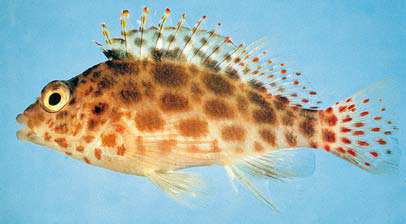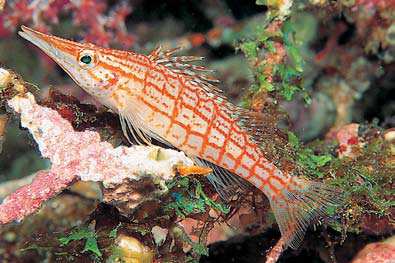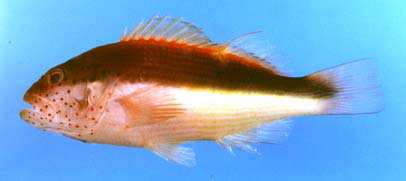CIRRHITIDAE
Hawkfishes
By Ukkrit Satapoomin
 Cirrhitichthys oxycephalus |
 Oxycirrhites typus |
 Paracirrhites forsteri |
|
Oblong fishes (size to about 30 cm). A row of canine teeth in jaws; a band of villiform teeth inside the canines, broadly anteriorly. 2 indistinct spines on opercle. A fringe of cirri on posterior edge of nostril; 1 or more cirri projecting from tips of interspinous membranes of dorsal fin. Dorsal fin continuous, with X spines and 11-17 soft rays, notched between spinous and soft portions; anal fin with III spines and 5-7 (usually 6) soft rays; pectoral fins with 14 rays, the lower 5-7 rays unbranched and usually enlarged; pelvic fins with I spine and 5 soft rays; principal caudal-fin rays 15. Scales cycloid. Swimbladder absent. Color: variable with species, usually with markings of spots, blotches or stripes on parts of body. Similar families occurring in the area. Serranidae: lower 5-7 pectoralfin rays not simple and thickened (except of a few Plectranthias); no fringe of cirri on posterior nostril; scales usually ctenoid; usually 3 spines on opercle; swimbladder present. Remarks. Bottom-dwelling fishes of coral reefs or rocky substrata. They use their thickened pectoral-fin rays to wedge themselves in position in areas subject to surge. Carnivorous, feeding mainly on benthic crustaceans; Paracirrhites fosteri, however, is primarily piscivore. |

|
|